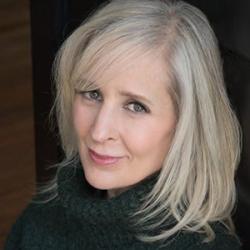Before she enrolled at the Stanford University School of Medicine in 2018, Anna Goshua tried to live sustainably. She embraced recycling and composting, used environmentally friendly household products, and ate a vegan diet. But when she got to Stanford, her concern for the planet found a new focus: the medical school’s curriculum.
“Once I learned about just how many intersections there are between climate and health, as well as the role of the health system in contributing to climate change, I thought we needed to do more to hold ourselves accountable,” Goshua says.
She and other students developed a climate change and health elective that will launch in the winter quarter of 2020. The series of lunch seminars will feature experts in areas like allergy and asthma as well as firefighters, patients, and community members to speak to the effects of climate on health.
Such efforts are becoming more common. More medical schools are tweaking the curriculum to address climate-related threats to humans — from growing rates of asthma due to a warming planet to problems related to heat exposure and weather disasters — and encouraging students to be advocates for a healthier planet.
“Most medical groups see [climate change] as a health emergency, one that we have to address as quickly as possible to avoid far more catastrophic impacts.”
Mona Sarfaty, MD, George Mason University
“The sense that we’re at an emergency level of this crisis has finally started to sink in,” says Mona Sarfaty, MD, director of the Medical Society Consortium of Climate and Health at George Mason University in Fairfax, Virginia. “Most medical groups see this as a health emergency, one that we have to address as quickly as possible to avoid far more catastrophic impacts.”
Momentum has exploded over the last few years. The three-year-old Medical Society Consortium of Climate and Health has grown to a group of 24 medical societies, representing more than half the nation’s doctors. The Global Consortium on Climate and Health Education, which was launched at Columbia University in 2017, already counts 20 U.S. medical schools among its 188-member roster.
“All physicians, whether in training or in practice for many years, have to be able to assess for, manage, and effectively treat the health effects of climate change,” says Lisa Howley, PhD, senior director of strategic initiatives and partnerships at the AAMC.
Producing climate-aware physicians
The process is well underway at a few schools, including the University of Illinois College of Medicine at Urbana-Champaign. For the last three years, the school has inserted climate-related health risks into simulated case scenarios involving standardized patients. The goal: to help students connect the dots between climate and health.
A scenario about a patient with asthma involves a retired office manager and gardener living in Sacramento, California, whose disease is kicked up by wildfires in Northern California. “We wanted to weave in a vulnerability, a risk that could make the asthma worse,” says Holly A. Rosencranz, MD, clinical associate professor of medicine. “So we took a standard case that we would want our students to know about anyway and changed the patient’s back story.”
Where previously the student might talk to the patient solely about medical treatment, they might now also discuss HVAC filters or the right kind of respirator mask patients should wear, Rosencranz says. And they might ask about access to air conditioning or whether the patient has a place to evacuate for awhile.
An advantage to the approach is that it does not add significantly to an already crammed curriculum. “You’re not taking away time from conducting a physical exam and taking a history,” says Japhia Ramkumar, MD, clinical associate professor of medicine. “Students are doing it all, but in the context of someone exposed to a climate risk.”
Integrating climate information
As part of a summer research project during his first year at the Icahn School of Medicine at Mount Sinai in New York City, New York, Christian Cayon worked with advisor Perry Sheffield, MD, assistant professor of pediatrics and environmental medicine and public health, to develop content on climate-related health problems and to inject it into several first- and second-year courses. “In order to take care of people, we have to take care of their home — the planet,” he says.
The result: The Medical Microbiology lecture covering vector-borne illnesses like Lyme disease now includes slides showing how the changing climate is affecting the spread of tick habitat. And in Brain and Behavior, which covers neurology and psychiatry, students now learn of research linking fossil-fuel related air pollutants and the neurodegenerative changes associated with Alzheimer’s disease.
“All physicians, whether in training or in practice for many years, have to be able to assess for, manage, and effectively treat the health effects of climate change.”
Lisa Howley, PhD
To minimize the addition of new material, Cayon and Sheffield looked for natural links to climate-related information within the school’s PowerPoint lectures and created two to three slides with talking points for each one. “It was a low lift for the faculty and complimented what they were doing and also often brought in the newest studies, which helped them update their lecture,” says Sheffield, who also teaches a course on global health for first-year medical students.
A similar approach is under way at the University of Minnesota. Slide decks with four or five slides per each topic were created to slip into existing lectures for each of the university’s health sciences programs, including the medical school and schools of nursing, public health, pharmacy, and dentistry.
“For example, we know that all the schools address some cardiovascular issues, whether it's early manifestations in a public health situation or care and treatment of acute cardiac problems,” says Teddie M. Potter, PhD, RN, clinical professor of population health and systems cooperative unit. “We decided to add in the impact of heat on people who have cardiovascular conditions.”
Nine different peer-reviewed slide decks are being used so far, and Potter is in the process of creating one on climate change’s effect on mental health. “We wanted all students to get climate content, so it's threaded through the curriculum and students understand, ‘my goodness, this affects everything,’” she says.
Dedicated classes
Last year, fourth-year students at the University of Colorado School of Medicine clamored to take the new elective, Climate Medicine, created by Jay Lemery, MD, associate professor of emergency medicine and section chief of wilderness and environmental medicine, who also started a graduate medical education fellowship in Climate and Health Science Policy at the school several years ago.
In addition to the climate and health content, students got a tutorial on how to write an opinion piece on the topic and submitted their articles to publications. Some of the op-eds were even published.
“We want these students to be able to articulate these problems as well,” explains Lemery. “This practice synthesizes what they’ve learned and gives them a chance to be advocates.” The class ended with a two-day visit to Rocky Mountain National Park, where students hiked and shared readings on environmentalism.
Equally popular is the climate and health course at the University of California, San Francisco (UCSF) School of Medicine, which has been offered since 2009. Required of all first-year medical students, the course explores the fundamentals while introducing students to concepts like environmental justice and the sustainability of health systems, among other content. “Global warming is an essential part of any 21st century medical school curriculum,” says the course’s creator, Thomas B. Newman, MD, MPH, professor emeritus of epidemiology and biostatistics and pediatrics.
“We’re the ones who are going to find ourselves on the frontlines of climate change. It’s important to be able to deal with these evolving threats and meet the needs of the people that we’re going to be serving.”
Anna Goshua, Stanford University School of Medicine
UCSF also offers training to faculty in the medical school and other health-affiliated schools who want to include more information on climate’s effect on health in their lectures but lack the information base. “For instance, if you're teaching a health policy class in the School of Pharmacy, how do you help your students understand how the water system can be negatively impacted when medications are not disposed of properly?” says Arianne Teherani, PhD, professor of medicine in UCSF’s division of general internal medicine and education scientist in the center for faculty educators.
Students taking charge
Like Anna Goshua, medical students are also driving efforts to address climate change realities. At UCSF, students from the schools of medicine, nursing, and dentistry launched the interdisciplinary group Human Health and Climate Change, which organizes educational forums and sustainability projects across campus.
A student group at Tulane University School of Medicine recently surveyed their colleagues about their interest in coursework on climate and health. “We took the results to the curriculum committee and got a course approved,” says former student Keanan McGonigle, MD, MPP. The class will be offered in the spring of 2020.
“We’re the ones who are going to find ourselves on the frontlines of climate change,” says Goshua, now a second-year Stanford student. “It’s important to be able to deal with these evolving threats and meet the needs of the people that we’re going to be serving.”

